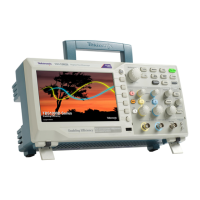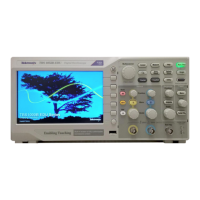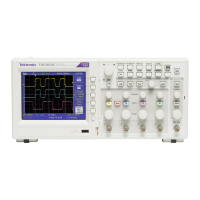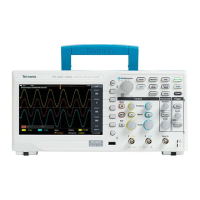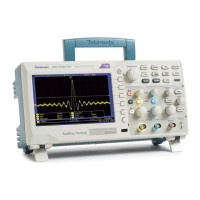Taking cursor measurements
You can use the cursors to quickly take time and amplitude measurements on a
waveform.
Measuring ring frequency
and amplitude
To measure the ring frequency at the rising edge of a signal, follow these steps:
1. Push the Cursor front-panel button to see the Cursor Menu.
2. Push the Type side-menu button. A pop-out menu should appear showing a
scroll-able list of the available cursor types.
3. Turn the Multipurpose knob to highlight Time.
4. Push the Multipurpose knob to select Time.
5. Push the Source side-menu button. A pop-out menu should appear showing a
scroll-able list of the available sources.
6. Turn the Multipurpose knob to highlight Ch1.
7. Push the Multipurpose knob to select Ch1.
8. Push the Cursor 1 option button.
9. Turn the Multipurpose knob to place a cursor on the first peak of the ring.
10. Push the Cursor 2 option button.
11. Turn the Multipurpose knob to place a cursor on the second peak of the ring.
You can see the Δ (delta) time and frequency (the measured ring frequency)
in the Cursor Menu.
Type
Time
Source
Ch1
Δt 540.0ns
1/Δt
1.852MHz
ΔV 0.44V
Cursor1
180ns
1.40V
Cursor2
720ns
0.96V
12. Push the Type side-menu button. A pop-out menu should appear showing a
scroll-able list of the available cursor types.
13. Turn the Multipurpose knob to highlight Amplitude.
14. Push the Multipurpose knob to select Amplitude.
Application examples
34 TBS1000B and TBS1000B-EDU Series Oscilloscopes User Manual
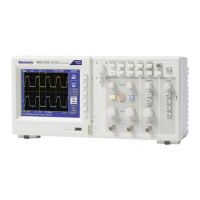
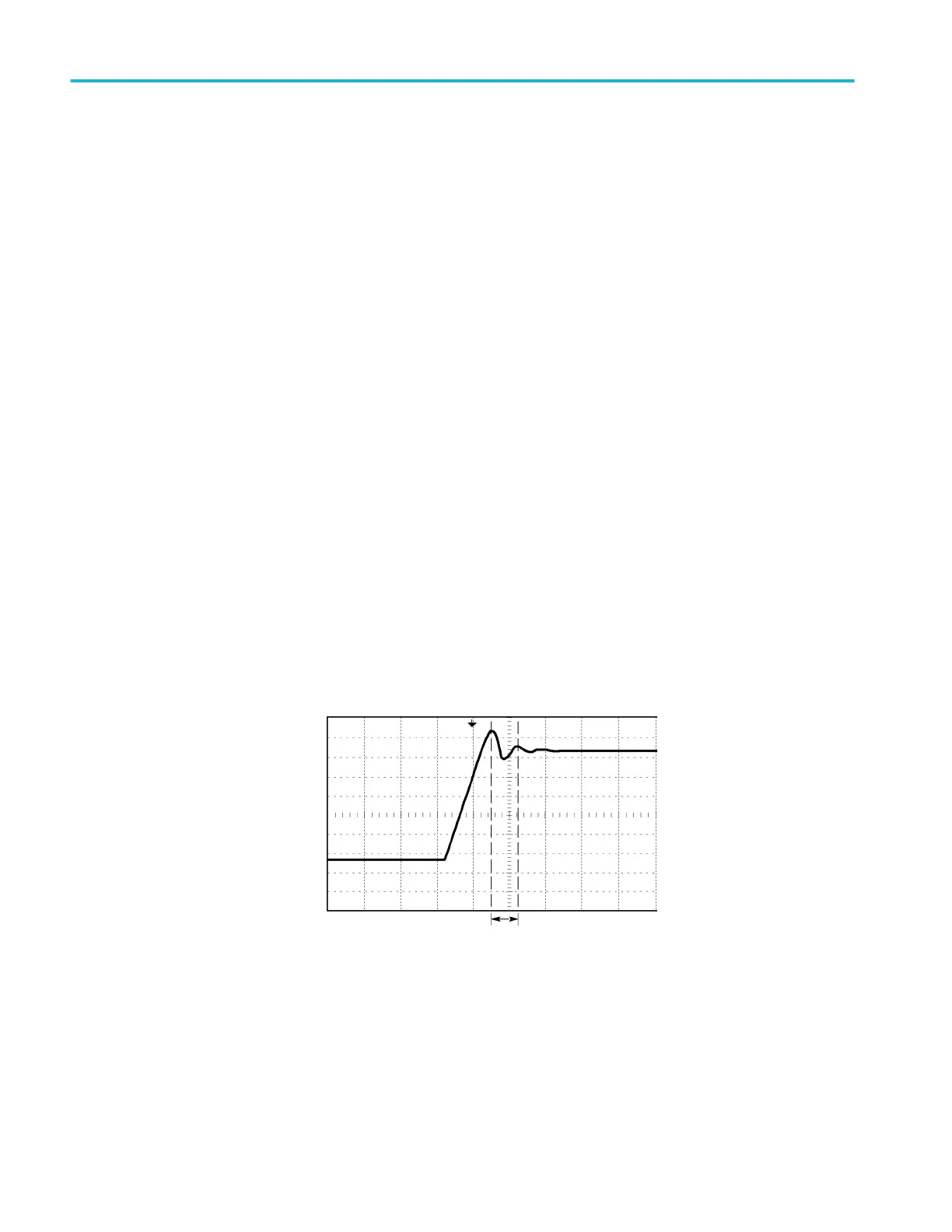